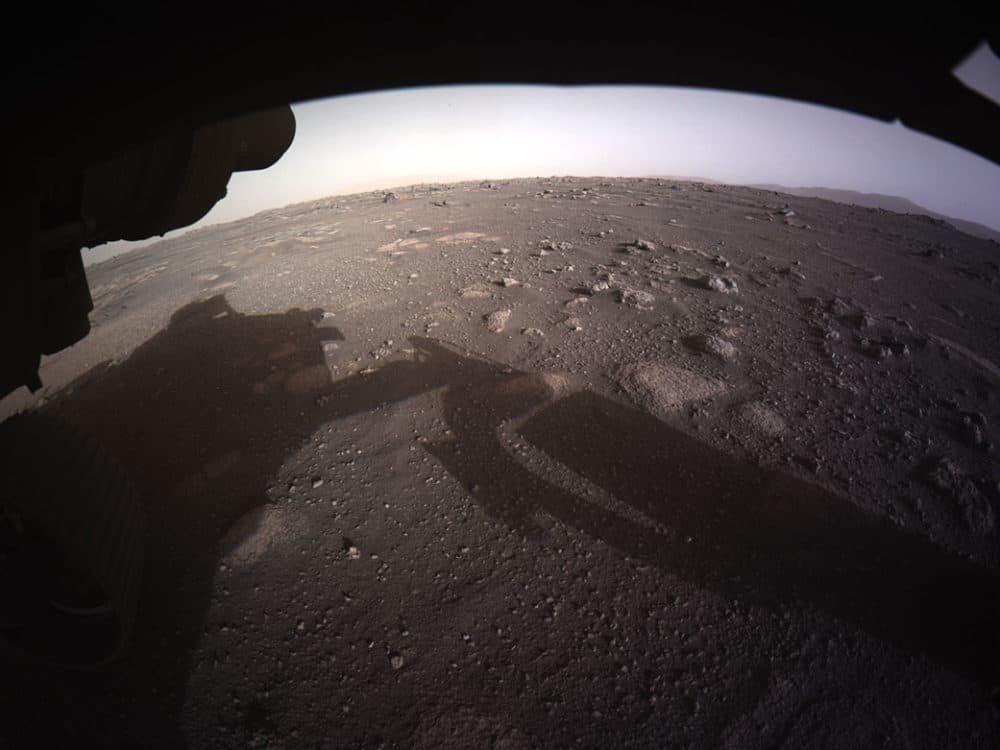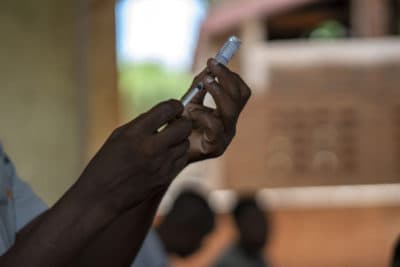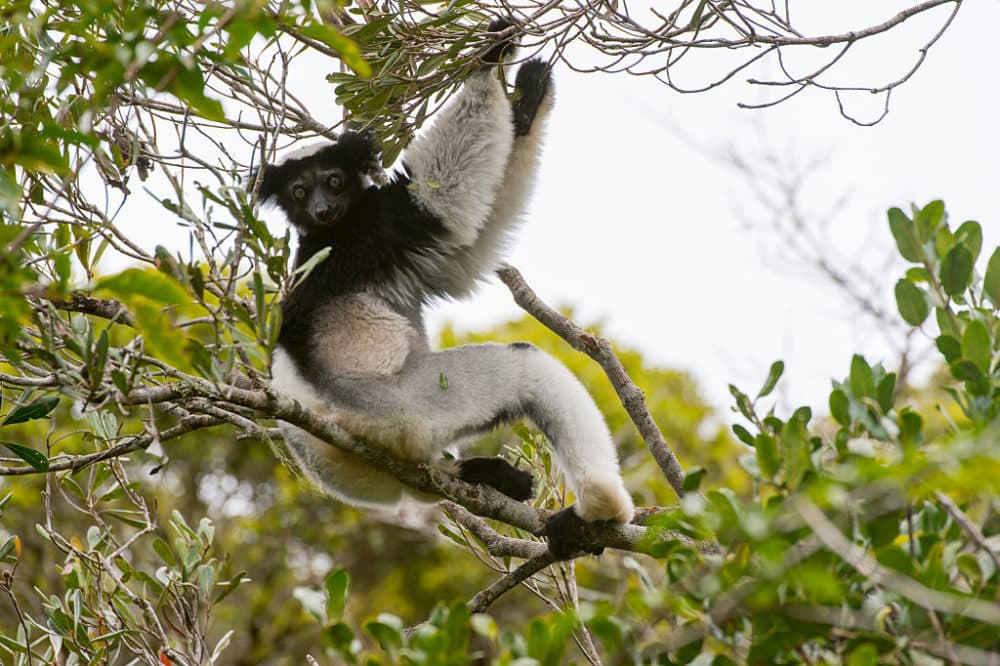Advertisement
From discoveries on Mars to lemurs with rhythm: Unpacking the top 2021 science stories
Resume
This year, scientists learned more about COVID-19 as the virus continued to circulate and mutate.
There were medical breakthroughs in treating other conditions and diseases. The cicadas emerged from underground, and Perseverance landed on Mars.
Laura Helmuth, editor in chief of Scientific American, says the biggest science story of the year — if not the decade or century — is the success of COVID-19 vaccines in protecting people from serious illness and death. Pfizer-BioNTech and Moderna used mRNA, a new vaccine technology, to produce the vaccines.
“Even though we're getting new variations with delta and omicron,” Helmuth says, “it should be pretty straightforward to just make minor changes to these vaccines so that they'll work against the worst new virus variants as they evolve.”
Other top science stories of 2021
First-ever malaria vaccine approved by the World Health Organization
“Oh, this is huge. And you know, I take it back. Maybe these two stories together [COVID-19 vaccines and the malaria vaccine] are the biggest stories of the decade, possibly century. It's astonishing. People have been trying for decades to figure out how to create a vaccine for malaria. It is so much harder than creating a vaccine for a bacterial disease or for a virus because the malaria parasite is a whole organism.

“It's really complicated and it has all these different stages of its life cycle, and it lives in the blood, it lives in the liver. It's just really hard to find and hard for the immune system to stop it. And so it was really hard to come up with a vaccine that worked. And finally, we have one. It's been in the works. It's been through clinical trials. There are others that are in the works that seem to be even more effective. And none of these are quite as effective as the COVID vaccines. But they seem to really, really be able to protect especially children from coming down with this terrible disease.”
CRISPR successfully treats some blood diseases
“The CRISPR-Cas9 gene editing system, the discoverers of this won the Nobel Prize just last year in 2020. It's not that old a discovery. From the beginning, scientists were saying, OK, well, it looks like this is something that could very precisely change genes, especially genes that are responsible for diseases based on just a single mutation or a very simple problem in the genome.
“This year, we have some of the first results showing that the technique can be used safely and apparently effectively to treat sickle cell disease. It's been used in another blood disease called beta thalassemia and then a really nasty disease called transthyretin amyloidosis. It's a fatal condition, and there was a trial using CRISPR-Cas9 to protect people from this basically a misfolded protein that causes terrible disease and death. They’re all still in the early stages. We're talking like dozens of people in the trials, but it looks very promising that this is a technique that could be safe and effective. There have been no serious side effects reported so far to treat diseases that start from basic genetic mutations.”
Brood X cicadas emerge this summer after nearly two decades underground

“Oh, it was amazing. These bugs spent 17 years underground waiting to emerge by the billions. … They were so loud. They were just buzzing and shrieking and bouncing against things all summer long. So we learned a lot about their life cycle. Every time they emerge, scientists get really excited. This year especially, they were studying this nasty fungus that infects male cicadas and causes their genitals to fall off. But the males still try and mate with the female cicadas, and unfortunately, this spreads the fungus and causes a lot of dead cicadas. They were going to die anyway, but unfortunately, they die before they can do what they were waiting 17 years to do, which is reproduce and lay their eggs. So that was kind of gross but interesting.
“And there's a lot of new research on how the tunnels they dig in the ground as they're emerging have changed how water percolates through the soil, so they just have this huge effect. Especially on any birds or chipmunks and squirrels that eat insects, they had a really good year because they were just so many fat, juicy cicadas to dine on.”
Out-of-this-world discoveries on Mars
“The Marsquakes are cool. We've learned so much about Mars in the past few years. We've heard the first sounds of the Martian atmosphere and the wind and storms whipping across Mars's atmosphere, which is much thinner than ours. And in February, the Mars Perseverance rover, which is nicknamed Percy, landed in Jezero Crater, which is a big crater on Mars that has a river delta. An ancient river used to flow there, and it created a delta, just like you'd see at the end of the Mississippi River. And so this little rover is just trundling along in this crater and taking soil samples. It's collecting them, which someday we'll try to figure out a way to send them back to Earth and analyzing, just like a little geologist, a cute little robotic geologist, that's analyzing the rocks. Some of the scientists on the Perseverance mission reported that the rocks that they're sampling are actually from an ancient lava flow. They thought they might have been sedimentary rocks put there by the ancient lakebed, the ancient river delta, but it looks like it was a great big magma flow like from a volcano.

“Then as part of this mission, there's a helicopter called Ingenuity. [NASA] always has very inspirational, aspirational names for their project names. It's a helicopter that we're flying on another planet, which is just mind boggling. It's hard enough to fly a helicopter on Earth, but you know, you're flying it with a joystick on Mars. And Mars has a very thin atmosphere, so it's hard to get the lift to make the helicopter fly. But it's been up 17 times so far, and it's sort of scouting around the crater as the rover kind of trundles along the base of this crater. So they're working as a team to explore Mars.”
The successful James Webb Space Telescope launch
“The James Webb Space Telescope, which a lot of astronomers are calling ‘The Just Wonderful Space Telescope’ rather than using the James Webb name to sort of emphasize [that] this is a really big deal. It's been in the making for about 30 years. It was initially supposed to launch in 2007, but you know, it's complicated. It's a process. A lot of things went wrong. It's this really expensive, complicated, exciting project.
“It's designed to see the oldest things in the universe, so the very first stars and galaxies that formed right after the Big Bang, and it's going to have a much larger telescope. It'll have a great big mirror that has to unfold in space. So it's really just [an] engineeringly complicated project. And if it works, we're going to have the best understanding that we've ever had of how the universe began and what's happened in the past billions and billions of years.”
Discovering that a certain type of lemur has rhythm

“A lot of what we just enjoy about science is understanding strange animal behavior. You know, quirky new things. And one of the things I've gotten a kick out of is a study this year on a kind of lemur called indri lemurs. And it turns out they're the only primates besides humans known to have a sense of rhythm. Scientists analyzed their songs, and they found predictable patterns, both in the sequences of the sort of notes, the sounds that they make, and the timing, and they match their rhythms to sing basically with one another. The reason they do this seems to be for bonding and communication. It's like a sweet sound, too. It kind of reminds us of why we sing together.”
Julia Corcoran produced this interview and edited it for broadcast. Serena McMahon adapted the interview for the web.
This segment aired on December 29, 2021.
